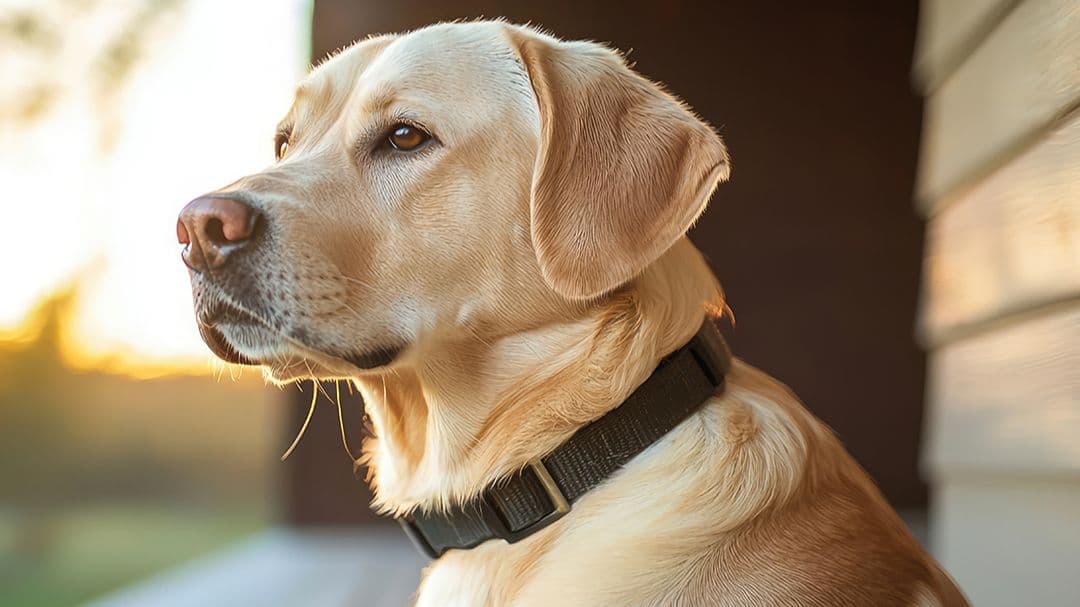
What is Cruciate Disease
Cruciate disease in dogs, also known as cranial cruciate ligament disease (CCLD) or rupture, is a common orthopaedic condition affecting the knee joint, specifically the cranial cruciate ligament (CCL).
This ligament, like the anterior cruciate ligament (ACL) in humans, stabilises the knee joint by preventing the tibia from sliding forward relative to the femur.
Degeneration of the CCL is the primary cause in dogs, leading to pain, rupture, instability, and osteoarthritis.
Written by Dr. Mariella Roberts, Veterinary Surgeon, Animal Trust Vets CIC | Published August 2025 | Review date August 2027 | This advice is for UK pets only and is not a replacement for seeing a vet

Symptoms of Cruciate Disease in Dogs
Limping - sudden or gradual, and ranging from mild to severe
Difficulty rising or sitting or reluctance to jump into cars or onto furniture
Swelling around the knee joint
Reduced activity, less playful and active
Stiffness especially after rest
Pain which may include signs such as vocalisation
Clicking or popping sound from the knee
When to contact your vet
If you notice your dog having one of the above symptoms, an examination with the vet is recommended to try and identify the cause and discuss the options available.
Diagnosis of Cruciate Disease in Dogs
Your vet may suspect a diagnosis of CCLD if your pet has been demonstrating the listed symptoms, and examination often identifies instability and/or pain in the knee joint associated with CCLD.
X-rays are often recommended to support the diagnosis and rule out other possible problems that could cause similar symptoms.
Treatment options for Cruciate Disease in dogs
Surgery is generally recommended for dogs with confirmed CCLD as the outcomes are generally significantly better for the patient in the short and long term. There are instances where conservative management (i.e. non-surgical) may be opted for but ongoing and progressive stiffness and lameness is expected in most cases. The options for management of CCLD include:
Non-surgical (Conservative) Management
rest
weight management
physiotherapy and hydrotherapy
pain killers and anti-inflammatory medications
Extracapsular repair: this involves placing a suture outside the joint to stabilise it, mimicking the function of the torn ligament.
Osteotomies (such as TPLO & TTA): cutting and realigning the bone to alter the joint biomechanics, eliminating the need for the cranial cruciate ligament to stabilise the knee.
The best treatment approach for your pet depends on several factors, including:
Surgery carries the greatest odds of return to full or near full function, however, due to factors such as age or systemic diseases, conservative management may be preferred if lameness id considered mild.
Severity of the tear: minor tears may be managed conservatively, while major tears often require surgery.
Dog's activity level: active dogs are more likely to need surgical intervention.
Overall, health and other medical conditions may influence the choice of treatment, however TPLO has been shown to have the best short- and long-term prognosis for dogs compared to TTA and extracapsular stabilisation and is widely considered the optimal choice in most cases for management of CCLD.
Prevention
Weight management for overweight dogs who are at higher risk for cruciate ligament disease.
Outlook
The majority of dogs undergoing surgery have good to excellent limb usage following recovery, typically over 90% in dogs undergoing TPLO with many returning to full function. Osteoarthritis is inevitable but is often of limited concern to your pet and is best mitigated by maintenance of a lean body weight and regular activity. Unfortunately, the majority of dogs that do not undergo surgery will continue to limp with more rapid muscle wastage and progressive joint degeneration.
